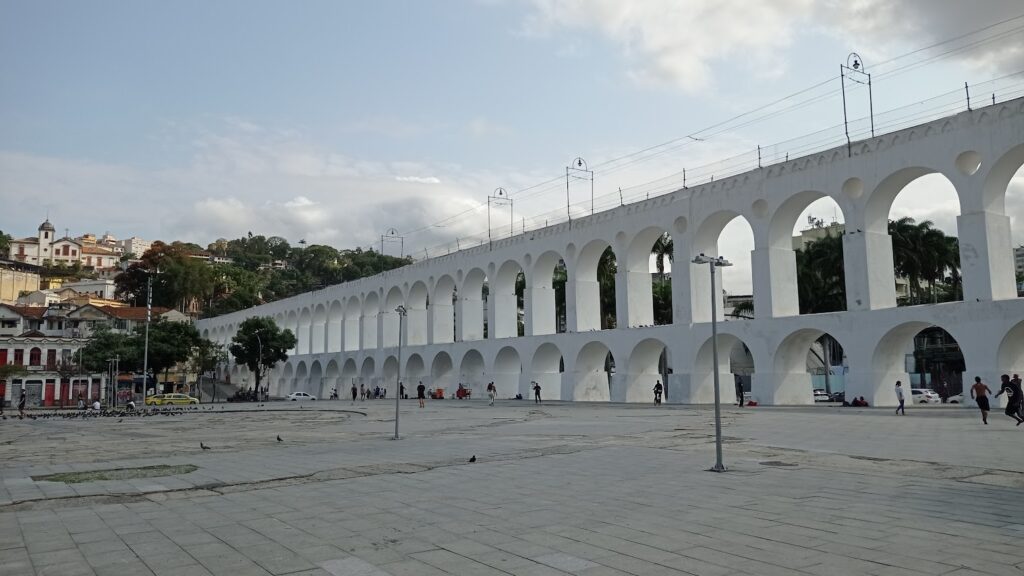Is Rio de Janeiro safe? Advice from someone who’s just visited
Rio has a bit of a double image. Despite being Brazil’s tourism capital and home to its most famous attractions, Rio also has a bit of a reputation for being unsafe, thanks to inequality, poverty and other sobering statistics. Pop culture has also done its share: mention Rio and people are in equal parts likely to think of The Girl from Ipanema or City of God – or both. Even Brazilians from other parts of the country sometimes have the view that this city is particularly unsafe.
It’s fair to say, I was a bit apprehensive before I got here. Three days after landing, however, my attitude towards Rio had relaxed considerably.
Answering the question of “is Rio safe” isn’t a firm yes or no, because on the one hand, if you’re in a safe neighbourhood and take some easily-followable precautions, the chances of anything happening to you are no greater than in western countries. On the other hand, rules for staying safe in Rio do go beyond a simple “don’t be a muppet”.
Still, the most important rule is…
Don’t be a muppet.


Don’t go wandering down dark or deserted streets, don’t have your wallet sticking out your back pocket, don’t wave your phone around as if to say “snatch this, please”, don’t get too drunk especially if you’re travelling solo… in short, if you wouldn’t do it at home, don’t do it in Rio. And for the love of all that is holy, do not leave valuables lying unattended on the beach – that’s just asking for trouble.
Try not to use Rio GIG Airport’s ATMs.
This probably got resolved, but a while back there was a recurring problem of thieves slipping card cloning devices into the airport’s ATMs and stealing card details that way. Either way, if you can wait until you reach an ATM inside a bank or can get some cash from a currency exchange back home, do so.
Don’t hike up to Christ the Redeemer or Sugarloaf Mountain if nobody else is.


I usually love a good hike for, among other things, the solitude that comes with it. Unfortunately, that fact isn’t lost on would-be muggers and incidents of armed robberies at the base of Rio’s iconic duo have been reported. Try to visit on a busy day – otherwise, give yourself permission to be lazy and take the bus/ cable car up.
Leave as much in your locker as possible.
Bring along a second credit/ debit card to be left in your locker or safe, and only take a small amount of your cash when going out. On a related note, almost every shop in Brazil has a card machine these days, so there is absolutely no need to be carrying around wads of cash like in the rest of Latin America. As for your passport, although all people in Brazil are legally required to have ID on them at all times, a photocopy of your passport should suffice on the off chance the police ask for yours.
Be careful on and around the beaches.


Because the Copacabana – Ipanema – Leblon trio are tourist magnets, sadly they also attract thieves. Be very wary if a group of young lads or more than one beach vendor approaches you since this kind of scenario often ends with someone’s bag or phone being snatched. Chances are, if they see your hands on your belongings, they’ll move on to a softer target – still, these areas tend to have a heavy police presence, so don’t be afraid to seek help.
If you are mugged…
Here’s a bit of advice about muggers up and down the world, but doubly so for Brazil. They are not to be negotiated with, called bollocks upon or, as some exceptionally dumb people may think, fought with. If you get held up at gun or knife-point, calmly hand over your valuables and don’t look at their face.
Let’s talk about favelas.


Favelas have a rough reputation, and it’s not altogether undeserved. With their origins as illegal settlements, they’ve constantly been blighted by gangs, drugs and police “pacification operations” which usually fail to bring about any meaningful change, save for even more resentment towards the authorities.
Yet, favelas are also communities with their own distinct cultures, and guided tours and homestays around these neighbourhoods have given rise to a whole new tourism industry – one centered around how “the other half” live. In fact, hardly any “top X things to see in Rio” lists omit any mention of favela tours. On top of that, some favelas in the Zona Sul such as Rocinha and Vidigal are considered so safe and are so well set-up for tourism that they are now facing the opposite problem of gentrification.
However: no favela is truly safe from violence. Every now and then, a police operation in the Zona Sul favelas that ends in a shootout undoes years of work on the tourism industry’s part to assure guests that these visits are safe. Another important note for my fellow UK travellers is that the Foreign Office does advise against going into favelas – even as part of a tour or homestay. That means if anything does happen to you, it could invalidate your travel insurance.
All this to say: don’t feel you have to visit a favela since someone out there told you they’re a “must-see”, because no favela visit is without risk. Avoid, like the plague, any that aren’t in Zona Sul, since the favelas to the north are much more likely to experience shootouts. And this isn’t strictly safety-related, but make sure you choose a responsible operator that supports these communities and respects their inhabitants.
You can absolutely go out at night – just be even more careful.
There’s no need to barricade yourself inside your hotel once the sun goes down (and you wouldn’t want to, for Rio’s nightlife is legendary), but just make sure to have people around you and be somewhere with good lighting. If you’re staying in a good neighbourhood, that shouldn’t be too difficult – crowds of people (including families) throng the streets after dark, even on weekdays. Still, make sure you don’t go down any quiet side streets or (and this is an idea your drunken self might entertain) onto the beach at night.
A couple of areas are worth mentioning in particular. First, Copacabana and Ipanema’s seafronts are safe enough, well-lit and filled up with bars, but the beaches themselves are neither. If your tipsy brain starts having thoughts of going for a stroll on the sand, catch yourself. Second, Centro (Rio’s downtown area) is generally heaving with office workers and activity during the day, but when the dust from rush hour has settled it’s completely vacant – save for less savoury characters. There are a lot of interesting things to see in this area (Lapa arches, Selaron Steps and the Bonde, to name but a few), so it’s definitely worth visiting when it’s safe though!
If you do become a victim of crime…
Rio has its own special tourist police, with branches located in Leblon and Copacabana, where officers speak good English. Note that the chances of you seeing your iPhone again if it gets snatched are slim to none, so don’t expect anything more than a report that you’ll be able to use for your insurance. And on that note…
Get travel insurance.
And that’s whether you’re yet to head off or are already on the road. I didn’t become a victim of crime, although I did have to use mine when I got sick.




